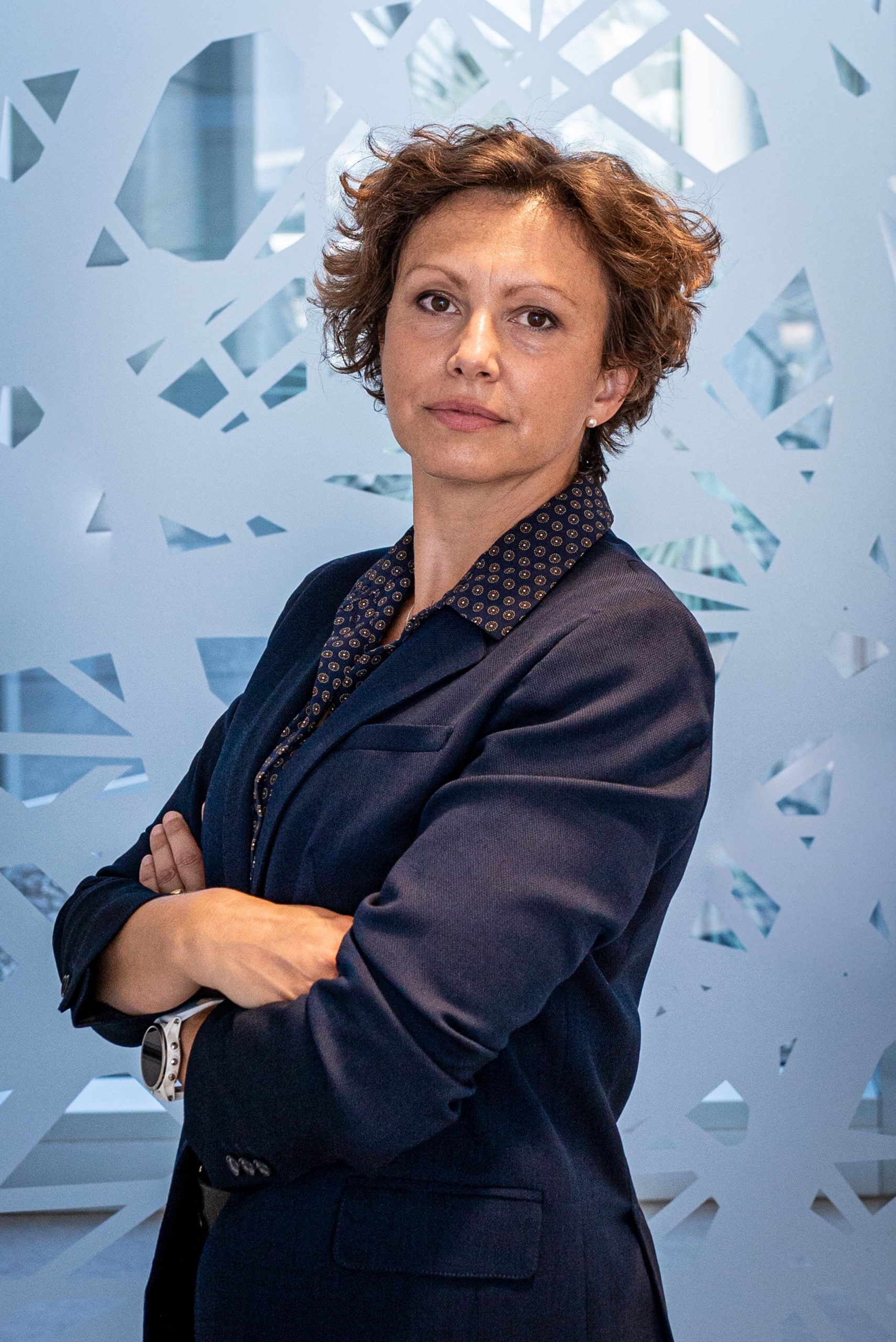
Gaia Pigino
- Associate Head of Structural Biology Research Centre, Structural biology
- Research Group Leader, Pigino Group
Gaia Pigino is a biologist, currently Associate Head of the Structural Biology Center at Human Technopole, after 9 years as Research Group Leader at the Max Planck Institute CBG in Dresden. She collaborate with Alessandro Vannini to develop the Centre for Structural Biology. Gaia’s laboratory studies molecular mechanisms and principles of self-organisation in cilia and other subcellular structures that are of fundamental importance for human health and disease.
CURRENT POSITION
| Since 2021 | Associate Head of the Structural Biology Center at Human Technopole, Milan, Italy |
| Since 2012 | Research Group Leader at MPI-CBG, the Max Planck Institute of Molecular Cell Biology and Genetics, Dresden, Germany |
POSTDOCTORAL RESEARCH
| 2010-2012 | Postdoctoral EMBO Long Term fellow Laboratory of Biomolecular Research (BMR), Department of Biology and Chemistry, Paul Scherer Institute (PSI) Switzerland. Supervisor: Prof. T. Ishikawa. |
| 2009-2011 | Postdoctoral researcher Institute for Molecular Biology and Biophysics, Swiss Federal Institute of Technology (ETH Zürich), Zurich, Switzerland. Supervisor: Prof. T. Ishikawa. |
| 2007-2009 | Postdoctoral MIUR research fellow Fellowship of the “Ministero Italiano dell’Istruzione, dell’Università e della Ricerca”. Laboratory of Cryotechniques for Electron Microscopy, Department of Evolutionary Biology, University of Siena. Supervisor: Prof. P. Lupetti. |
| 2009 | Participant at the Physiology Course at MBL in Woods Hole Marine Biological Laboratory, Woods Hole. Directors: Dyche Mullins and Claire Waterman. |
EDUCATION
| 2003-2007 | Ph.D. Student (Ph.D. Fellowship by the Italian government “Ministero Italiano dell’Istruzione, dell’Università e della Ricerca”). Department of Evolutionary Biology, University of Siena. Supervisor: Prof. F. Bernini and Prof. C. Leonzio. |
| 2002 | Diploma in Natural Science (Summa cum laude). University of Siena, Italy. Thesis supervisors: Prof. C. Leonzio and Prof. F. Bernini. |
OTHER POSITIONS
| 2003 | Research Associate. Department of Environmental Sciences G. Sarfatti, University of Siena. Advisor: Prof. C. Leonzio |
AWARDS and FUNDING
| 2022 | EMBO Member |
| 2019 | DFG Grant – GAČR-DFG Cooperation |
| 2018 | PoL starting fellowship (from the Dresden Excellence Cluster ‘Physics of Life’) |
| 2018 | Keith R. Porter Fellow Award for Cell Biology |
| 2018 | ERC Consolidator Grant (ERC-2018-COG N#819826 CiliaTubulinCode) |
| 2018 | Excellence Cluster ‘Physics of Life’, as a core Principal Investigator |
| 2010 | EMBO Long Term fellowship |
| 2009 | Scholarship from the Marine Biological Laboratory (Woods Hole, Massachusetts) MBL Physiology Course. |
| 2007 | Post-Doctoral Research fellowship from MIUR. |
| 2003 | Ph.D. Fellowship from MIUR. |
Fellowship to students and postdocs
| 2022 | EMBO Long Term Fellowship to Helen Foster |
| 2021 | EMBO Postdoc Fellowship to Nikolai Klena |
| 2019 | HFSP Postdoc Fellowship to Adrian Nievergelt |
| 2018 | EMBO Long Term Fellowship to Adrian Nievergelt |
| 2017 | Marie Curie Fellowship to Adam Schröfel (H2020-MSCA-IF-2016) |
| 2015 | DIGS-BB Fellowship to Guendalina Marini |
| 2012 | DIGS-BB Fellowship to Ludek Stepanek |
Google Scholar
Contacts
Follow on
Publications
-
03/2021 - PLoS Genet
Ccdc113/Ccdc96 complex, a novel regulator of ciliary beating that connects radial spoke 3 to dynein g and the nexin link
Ciliary beating requires the coordinated activity of numerous axonemal complexes. The protein composition and role of radial spokes (RS), nexin links (N-DRC) and dyneins (ODAs and IDAs) is well established. However, how information is transmitted from the central apparatus to the RS and across other ciliary structures remains unclear. Here, we identify a complex comprising […]
-
01/2021 - Science
Tubulin glycylation controls axonemal dynein activity, flagellar beat, and male fertility beat, and male fertility
Posttranslational modifications of the microtubule cytoskeleton have emerged as key regulators of cellular functions, and their perturbations have been linked to a growing number of human pathologies. Tubulin glycylation modifies microtubules specifically in cilia and flagella, but its functional and mechanistic roles remain unclear. In this study, we generated a mouse model entirely lacking tubulin […]
-
09/2020 - Nature Structural Molecular Biology
The molecular structure of mammalian primary cilia revealed by cryo-electron tomography
Primary cilia are microtubule-based organelles that are important for signaling and sensing in eukaryotic cells. Unlike the thoroughly studied motile cilia, the three-dimensional architecture and molecular composition of primary cilia are largely unexplored. Yet, studying these aspects is necessary to understand how primary cilia function in health and disease. We developed an enabling method for […]
-
05/2020 - Molecular Biology of the Cell
Reorganization of budding yeast cytoplasm upon energy depletion
Yeast cells, when exposed to stress, can enter a protective state in which cell division, growth, and metabolism are down-regulated. They remain viable in this state until nutrients become available again. How cells enter this protective survival state and what happens at a cellular and subcellular level are largely unknown. In this study, we used […]
-
08/2019 - Scientific Reports
Microridges are apical epithelial projections formed of F-actin networks that organize the glycan layer
Apical projections are integral functional units of epithelial cells. Microvilli and stereocilia are cylindrical apical projections that are formed of bundled actin. Microridges on the other hand, extend laterally, forming labyrinthine patterns on surfaces of various kinds of squamous epithelial cells. So far, the structural organization and functions of microridges have remained elusive. We have […]